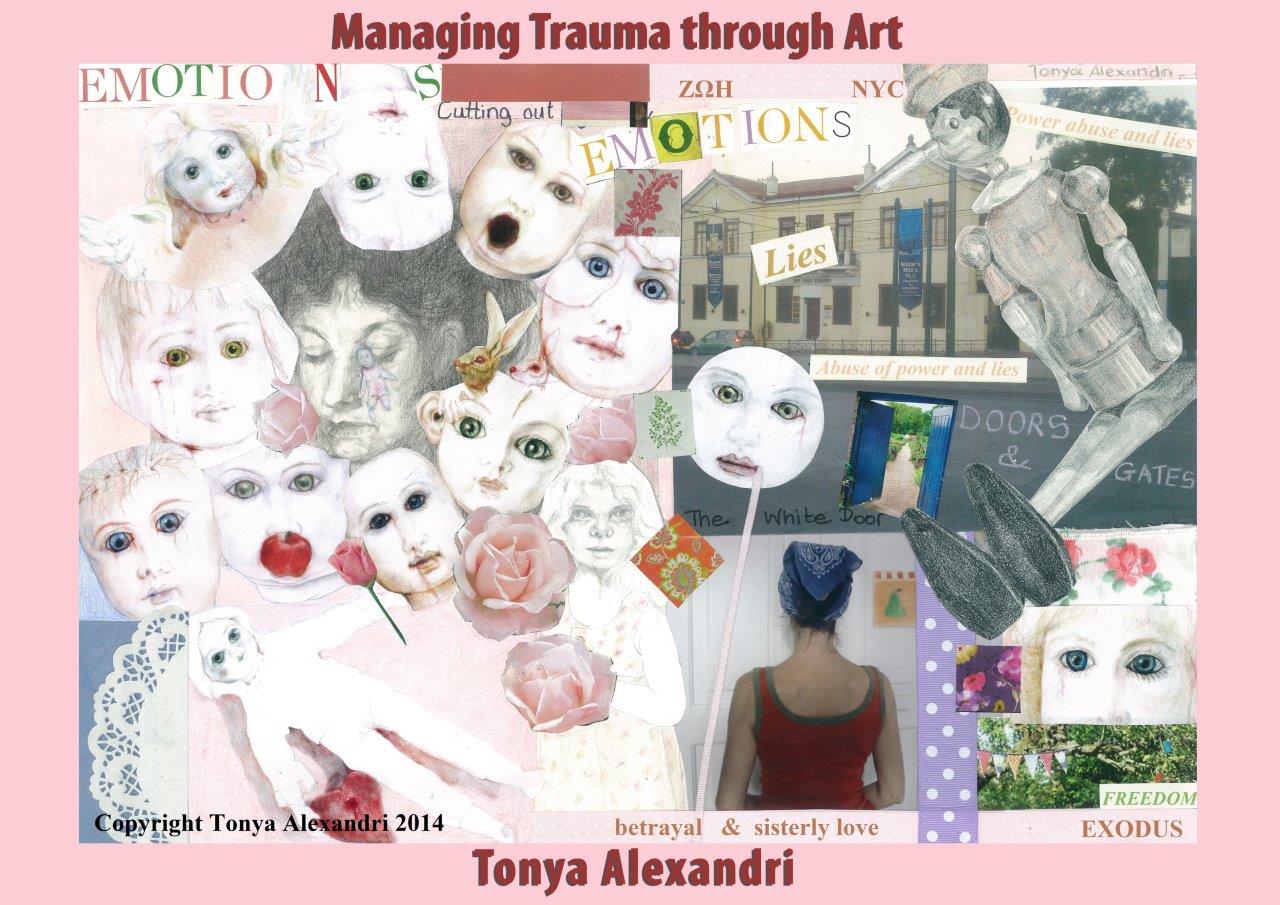Experiencing trauma and especially, complex trauma on a long term basis leaves people disempowered and without a coherent sense of self or a continuous life narrative, and most importantly, it shatters our belief in a fair and orderly universe; it shatters our belief in humanity and justice, which can throw us into a crisis of meaning. Injustice and acts of inhumanity can leave us despairing, because ‘it is by justice that we can authentically measure man’s value or his nullity …. The absence of justice is the absence of what makes him man’ (Plato, cited in Black Like Me, by John Howard Griffin)
Creating an art journal of one form or another can help restore our sense of self-worth and can also assist us in unraveling memories, images, thoughts and emotions as they surface in conscious awareness. Creating art facilitates healing, understanding and .releasing remnants of trauma repeatedly as it arises in fragments or in bearable doses. Processing memories through art journaling often helps us discover what pieces are missing. Finally, it also allows us to explore different aspects of memories that may be reoccurring and facilitates transformation of our experiences.
Most importantly within each sheet of paper or page of diary we can contain material and feelings. We can remain with the emotions and process further or put our diary away if emotions become overwhelming. We learn to discriminate how much we can handle at any given moment without overloading ourselves. We can contain difficult aspects of memories and emotions and not be flooded by the material or thrown into despair. Creating art can be used in parallel with other forms of therapy or means of processing. Trauma work and healing always involves grieving and coming to terms with what has been lost or ‘never had’. Exploring these issues through art is less overwhelming.
Moreover, creating art allows what needs to be healed to surface in layers and in its own wise timing. It allows us to focus and process whatever experience or emotional state is being triggered in the here and now. Visual journaling can allow memories that are intruding into the present moment to be understood. In some sense, what is urgent is selected by our mind – what we are ready in any particular moment to deal with and see, literally see in the case of visual journaling, surfaces in our art. It may arise in different forms, either in imagery or/ and words.
An art journal helps us create a safe world within to begin with, but as we heal and understand more we can set healthier boundaries, which allow us to feel the safety of our own strength and our new empowerment. Journaling, either through writing or drawing, can help us feel grounded when that is needed, record the stimuli (people, places, sounds, words, smells, tastes and associations) that may trigger fear, which is the first step to diffusing cues and triggers. Also visual journaling allows documentation of our experience and facilitates our ability to re-visit material and view it in a different light and through reprocessing it deepens our narrative work.
Art journaling can help us feel more empowered, understand and make links across experiences, reduce our anxiety and fear, which reduces cortisol levels and other stress hormone levels. Along with physical exercise and bodywork we can help release our life from the often tenacious hold of trauma and heal.
More recently, I’ve been really interested in neuroscience, and as I have mentioned elsewhere, trauma changes and impacts our nervous system; but the good news is that we can facilitate neuroplasticity, which is our brain’s capacity to rewire and heal/ change even in adulthood. Creating art is one way of increasing connectivity and integration within the brain. I read somewhere that it is an exercise for the sensory parts of the brain. Art activities that require focused detailing and concentration like drawing, sculpting, etc., help quiet the mind, a kind of mindfulness or experience of deep concentration.
Neuroscience has also found that basically we are wired to be good and generous because practicing positivity, kindness and compassion facilitates growth and integration. Simply put, helping others and giving to others helps us heal. Passing on information and experiences of healing or hope (through art or writing, as well) – born from the challenges we have overcome in our life-allows trauma survivors to help others do the same, and thus, give back.
I tend to sit down and create when the urge is very strong or when there is a pressing experience, memory or emotion. I tend to concentrate deeply and usually work in total calm despite the often painful material been processed, explored and presented, and I use both images and brief texts or words. Also, it may take several sittings to complete a journal page. At other times I work very fast, I use ink or pencil and I scribble or sketch roughly, and focus totally on the process, the intensity of the emotion, for instance, and deeper understanding. Later, I return to the material over and over for additional processing and understanding. But one can also engage in art activities and exercises to explore and resolve particular issues or deal with specific areas and experiences.
Finally, there are countless art exercises and techniques (more or less structured) that one can use, but that is the topic for a future post.
Tonya Kyriazis-Alexandri October 9th, 2014

